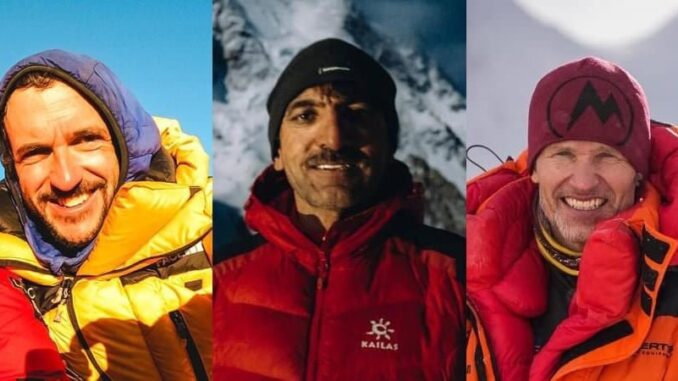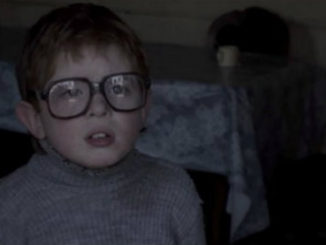
Nek Amal Utmani
The Santiago Times Correspondent
ISLAMABAD – Pakistani mountaineer Muhammad Ali Sadpara and his two foreign companions, John Pablo Moher and John Snorri, could not be found after three days, Ali Sadpara and his companions tried to climb K2 in the winter, but since last three days, they are missing and lost for their contact with the base camp. Hopes of their departure and survival are fading.
Secretary Alpine Club of Pakistan Karar Haideri said that today the weather was very bad also and the rescue helicopters could not fly high and they had to return.
According to him, Ali Sadpara’s son Sajid Sadpara has reached back to his area and he will share any official news about his father.
Talking to the media he said that Ali Sadpara is a national hero of Pakistan and he wanted to climb more peaks and planned to climb Mount Everest next year. He added that the search operation would continue and he would try to get the helicopters to fly as far as they could. But hopes for climbers’ lives are fading.
Meanwhile, Sajid Sadpara, son of Pakistani mountaineer Muhammad Ali Sadpara, who went missing in the winter trying to reach the world’s second-highest peak K2, has reached Skardu.
Speaking to the media, Sajid Sadpara said he believes his father Ali Sadpara, John Snorri, and Juan Pablo Mohar have succeeded because the last time they saw him crossing the bottleneck.
Sajid further said that after crossing the bottle, everything becomes easier and he thinks that there must have been an accident with him on his return because the weather had started to get worse.
Sajid Sadpara said that earlier on Friday night, when four climbers, including him, started their journey to climb K2, their oxygen was being affected when they reached an altitude of 8200 meters. On the other hand, his mental state was not supporting him, so his father advised him to go down.
He further said that he went downstairs and waited for the other comrades to arrange water for them after the summit but it did not happen.
He says that on Friday afternoon his father and other climbers began their expedition from Bottle Neck and at around 6 pm their satellite set turned on for a few seconds after which the signals disappeared.
According to him, due to severe cold, the batteries of the phone run out very quickly. The base camp team could not be reached for comment because they had a walkie-talkie set.
The world’s most difficult rescue operation
On Saturday and Sunday, a search operation was launched by Army helicopters to find the missing climbers at an altitude of 7,000 meters. The search operation involved Dawa Sherpa, manager of Seven Summit Tracks Company, local climbers, and other experts. However, despite the search, no trace of the missing climbers has been found so far.
Sajid Sadpara said that if we look at the history of K2, more than 90% of the accidents with climbers happen when they start downhill and they think that their father and other climbers happened the same accident.
According to Sajid, his health is improving now. He is currently staying at a relative’s house and will try to travel home by evening, but he is worried about his father and other climbers.
In mid-December, 60 climbers from about 18 countries camped out to climb the world’s second-highest peak in winter.
On January 16, ten Nepalese climbers led by Nirmal Purja made history and climbed K2 for the first time in the winter, after which Ali Sadpara set out with his son Sajid Ali Sadpara to make another history. But bad weather forced them to land at base camp.
What is K2’s death zone, what happens to humans there?
What is K2’s ‘death zone’ for climbers and how many hours can climbers live there? This question often arises in the minds of readers، You may have seen the scene in the movie ‘Everest’ in which the New Zealand guide and climber Andy Harris suddenly begins to have delusional thoughts and he changes his clothes and Gear throws everything off and embraces death.
Six years ago today, it was hard to understand why Andy did such a thing. At the time, experts did not know that Harris was suffering from ‘hypoxia’ and how the lack of oxygen at such an altitude affects the human brain and body. While K2 evokes the spirit of ‘adventure’ in the hearts of climbers who conquer high peaks, this peak is considered to be even more terrifying than the world’s highest peak, Everest.
According to medical experts, the human body is designed to live at an altitude of 2100 meters above sea level and at higher altitudes, the oxygen saturation in the human body begins to decline rapidly and negative effects begin to occur in the body. According to Rick Martin, author of the Action Guide High Altitude Acclimatization and Alignment, on such high mountains.
For several weeks before leaving, climbers undergo acclimatization meaning that the body adapts to the environment so that their brains can adapt to the oxygen supply, gradually adjusting to the environment.
According to K2, climbers usually enter the danger zone after Camp One (altitude of 6000 meters) and the negative effects of lack of oxygen begin to appear in them. Researcher Swapnil Paralkar, who is affiliated with GMERS Medical College, Gujarat, India, has done some very comprehensive research in this regard.
In his research paper, he writes that many climbers suffer from high altitude pulmonary anemia (HAPE) or high altitude cerebellar anemia (HACE), which is the leading cause of death. With hypoxia (lack of oxygen), the pulse becomes faster, the blood thickens, and the risk of stroke increases. In the worst cases, climbers’ lungs become inflamed and they may develop high altitude cerebellar anemia (HACE). They begin to cough with or without blood and their respiratory system is severely affected. In such a situation, most of the climbers’ brains stop working, they lose their ability to think and understand, they have strange delusional thoughts and then they do what Andy Harris did in the movie ‘Everest’. Located at an altitude of 8,611 meters above sea level.
K2’s popular place known as ‘Bottle Neck’ begins at about 8,000 meters and is called a ‘death zone in mountaineering terms and there is a significant increase in survival challenges. The climbers have to fight with the deadly natural weather as well as a fight inside their bodies. In the death zone, one wrong step can mean falling straight into a ditch or a thousand feet deep glacier and embracing death. Deprivation of oxygen at that altitude can have serious effects and the human brain loses control and paralyzes the body.
The lack of oxygen needed by humans to breathe in the death zone not only increases the chances of ‘altitude scans’ (altitude sickness)’ but also high winds and low temperatures at such altitude can cause frostbite in any part of the body.
According to Hultgren, in such a situation the climbers can suffer medical conditions such as cerebral endemic, retinal hemorrhage, severe headaches, nausea, hallucinations or deception, etc. There is no room for error in the death zone. The climbers can’t spend more than a certain amount of time and sleeping or stay longer means death. That’s why the climbers who arrive in camp four do not sleep. The climber just tries to get to the summit or get to the top cheaply and take about 16 to 18 hours.



